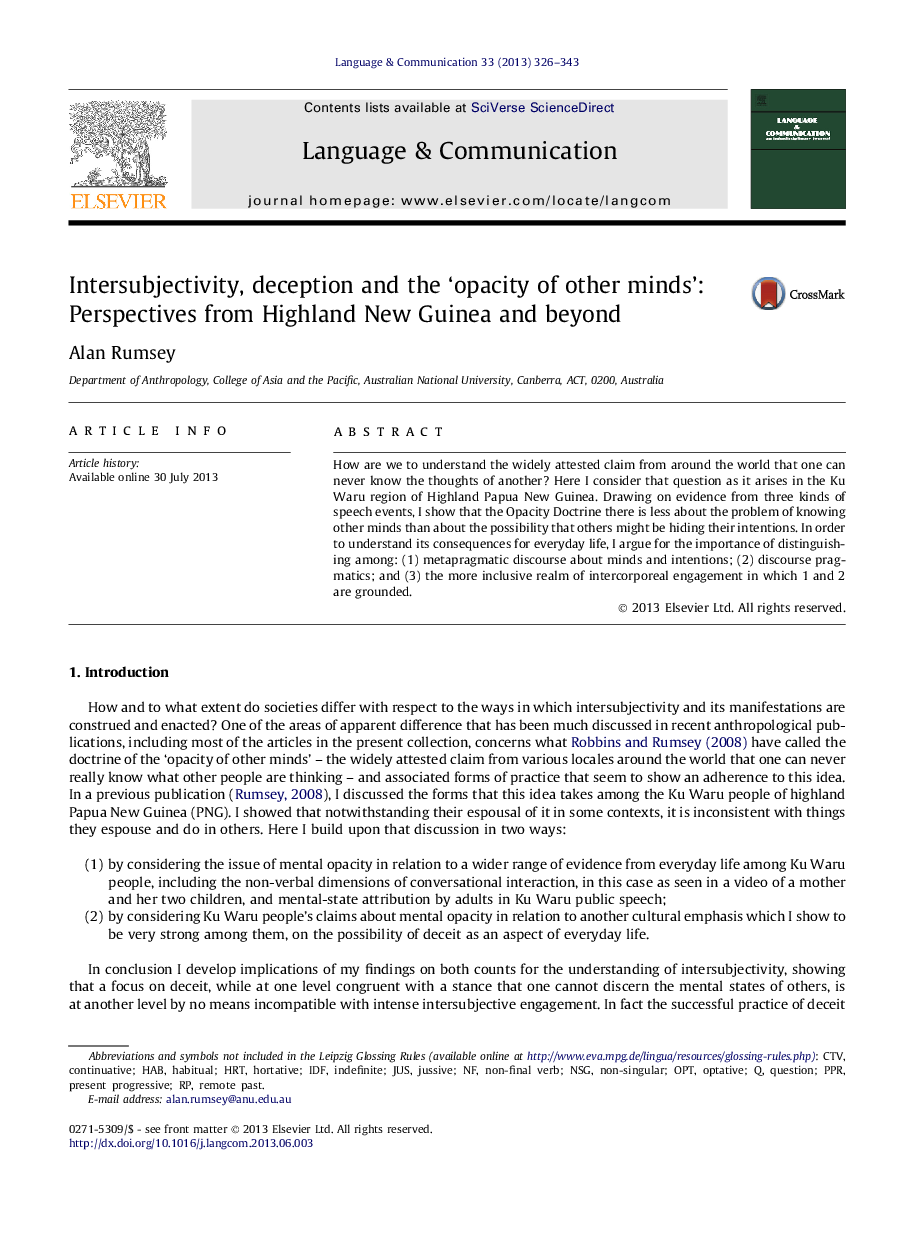| Article ID | Journal | Published Year | Pages | File Type |
|---|---|---|---|---|
| 10460915 | Language & Communication | 2013 | 18 Pages |
Abstract
How are we to understand the widely attested claim from around the world that one can never know the thoughts of another? Here I consider that question as it arises in the Ku Waru region of Highland Papua New Guinea. Drawing on evidence from three kinds of speech events, I show that the Opacity Doctrine there is less about the problem of knowing other minds than about the possibility that others might be hiding their intentions. In order to understand its consequences for everyday life, I argue for the importance of distinguishing among: (1) metapragmatic discourse about minds and intentions; (2) discourse pragmatics; and (3) the more inclusive realm of intercorporeal engagement in which 1 and 2 are grounded.
Related Topics
Social Sciences and Humanities
Arts and Humanities
Language and Linguistics
Authors
Alan Rumsey,
